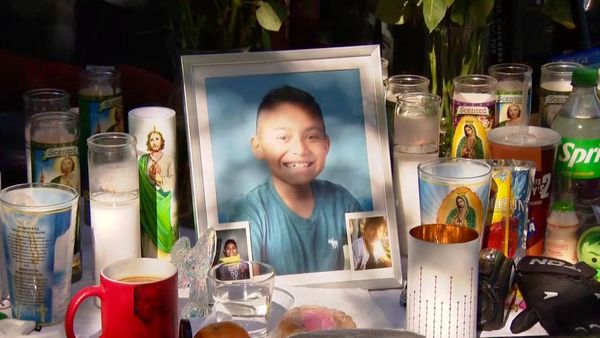
Two years of death and destruction in Gaza ended once Israel and Hamas signed off on Donald Trump’s 20-point peace plan. A ceasefire is in place. Humanitarian trucks have begun to roll in. Hostages and prisoners are being exchanged. Israel has begun a first-phase pullback from the territories it controls, and under Trump’s plan its troops will eventually be deployed in a buffer zone along Gaza’s land border.
Given these developments – all part of the opening phase – dismissing the momentous changes in Gaza is to deny reality. There have already been disputes over the return of the bodies of Israeli hostages, but there are unresolved longer-term problems that could derail the ceasefire and imperil the rest of the Trump plan.
One concerns Israel’s withdrawal from Gaza. Even after the IDF’s first pullback, it will control more than half of the territory, including the Philadelphi corridor adjacent to Gaza’s border with Egypt, which Hamas has insisted it must relinquish. The next withdrawal is supposed to reduce Israel’s military presence in Gaza to 40%, followed by another that cuts it to 15%.
Disputes over the extent and pace of the IDF’s withdrawals could jeopardise the ceasefire. The plan heightens this risk by failing to specify a timeline for the IDF’s remaining disengagements – or who will ensure their implementation, and how.
These aren’t trivial omissions. Hamas had long insisted that Israel must leave all of Gaza as part of any ceasefire deal. Its negotiators settled for less because of intense pressure from Egypt, Turkey and Qatar, enlisted by Trump for that purpose.
If Israel balks at additional withdrawals, Hamas can’t count on Trump to act as enforcer. It doubtless remembers that in March Israel walked away from the multi-stage 15 January agreement, which the US supported, once it came time to negotiate a timetable for the departure of its troops – even though hostage releases remained incomplete. The White House did nothing in response, not even after Israel also imposed a three-month blockade on aid deliveries.
More recently, Hamas watched Benjamin Netanyahu ignore Trump’s call earlier this month for Israel to halt its bombing, issued after Hamas’s written response to his plan convinced him that its leaders were prepared for peace. Again, the US stood by as Israel continued its offensive in Gaza City, killing dozens of its inhabitants, including children, within a day of Trump’s appeal.
The Trump plan prohibits Israel’s occupation or annexation of Gaza. That proviso doesn’t, however, rule out an open-ended Israeli military presence – portrayed as temporary and justified by allegations that Hamas hasn’t met its disarmament obligations. But the more Hamas believes that Israel is seeking to delay its departure, the more likely it is to stall on disarmament.
Though the plan calls on Hamas to surrender its weaponry and permit the destruction of its underground tunnel network and weapons production centres, it lacks monitoring and verification provisions.
This omission could give Israel leeway to delay withdrawing troops by citing Hamas’s non-compliance and provide Hamas room to deny the charge. How will the veracity of Israel’s claims and Hamas’s rebuttals be verified? How will Hamas’s obligations be enforced, and by whom?
Given the complete lack of trust between Hamas and Israel, the plan’s vagueness makes disputes over disarmament all but inevitable – and potentially fatal to the ceasefire.
This isn’t a far-fetched scenario. Yechiel Leiter, Israel’s ambassador to the US, said recently that Israel would remain in Gaza until Hamas disarms fully, and shortly after his cabinet approved the ceasefire plan, Netanyahu vowed to resume the war if Gaza wasn’t “demilitarised”. What’s more, Israel has not promised a total military withdrawal even if those conditions are met.
Hamas, for its part, fears being left without means to resist if it disarms. It also worries that the IDF will then have greater freedom to remain in parts of Gaza that lie beyond the buffer zone or to demand that the zone extend deeper into Gaza. Tellingly, Hamas’s statement accepting the ceasefire did not mention disarmament. Moreover, on Saturday, one of its senior officials stated that, “The demand that we hand over our weapons is not up for negotiation,” adding that disarmament was “out of the question”.
Another problem with the Trump plan is the international stabilisation force (ISF), which it says will be composed of troops from regional states and other Muslim countries, and will assume responsibility for Gaza’s security after the IDF hands over the areas it leaves. The plan offers no details on the size of this peacekeeping force, the scope of its responsibilities and the means it will use to contain disorder, whether from clashes between Hamas and Israel or violence pitting Hamas against armed groups (some rival clans, others backed by Israel), something that has already occurred. Plus, though a few states have signalled their interest, none has yet committed to providing troops for the ISF – perhaps because of these looming dangers.
And assuming that Israel will countenance a robust peacekeeping force in Gaza – where it has acted without constraint since seizing the territory during the 1967 six-day war – is a leap of faith. Should Israel continue to intervene in Gaza, citing threats to its security, it’s hard to imagine the ISF resisting, particularly if the IDF goes further and reoccupies parts of the territory.
Gaza’s ceasefire isn’t fated to fail, but its foundation is fragile. If it cracks, the rest of the Trump plan – continued aid deliveries, the deployment of peacekeepers, a postwar governance structure and economic reconstruction – will remain aspirational. Worse, Gaza could revert to a killing field.
Rajan Menon is a professor emeritus of international relations at the City College of New York and a senior research scholar at Columbia University’s Saltzman Institute of War and Peace Studies
Do you have an opinion on the issues raised in this article? If you would like to submit a response of up to 300 words by email to be considered for publication in our letters section, please click here.







